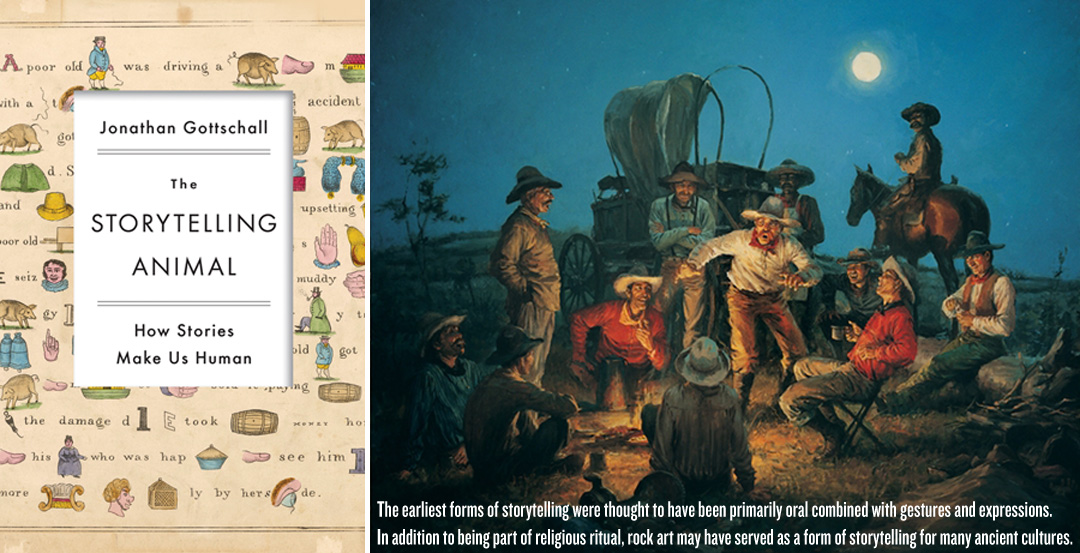If storytelling was removed from the human experiment, we would still be walking around on all fours. Furthermore, stories are not only essential to how we understand the world — they are how we understand the world. The power of narrative and metaphor in shaping the human mind and the world around us is fascinating to no end, and in his latest book, The Storytelling Animal, educator and science writer Jonathan Gottschall constructs a powerful study of both the evolutionary and sociocultural roots of storytelling and its role in shaping the human experience. As Brain Pickings writes in their review of the book, “What emerges is a kind of ‘Unified Theory of Storytelling’, revealing not only our gift for manufacturing truthiness in the narratives we tell ourselves and others, but also the remarkable capacity of stories — the right kinds of them — to change our shared experience for the better.” The following is a short excerpt from the book:
“Human minds yield helplessly to the suction of story. No matter how hard we concentrate, no matter how deep we dig in our heels, we just can’t resist the gravity of alternate worlds.
… The writer is not an all-powerful architect of our reading experience. The writer guides the way we imagine but does not determine it. A film begins with a writer producing a screenplay. But it is the director who brings the screenplay to life, filling in most of the details. So it is with any story. A writer lays down words, but they are inert. They need a catalyst to come to life. The catalyst is the reader’s imagination.
… Clever scientific studies involving beepers and diaries suggest that an average daydream is about fourteen seconds long and that we have about two thousand of them per day. In other words, we spend about half of our waking hours — one-third of our lives on earth — spinning fantasies. We daydream about the past: things we should have said or done, working through our victories and failures. We daydream about mundane stuff such as imagining different ways of handling conflict at work. But we also daydream in a much more intense, storylike way. We screen films with happy endings in our minds, where all our wishes — vain, aggressive, dirty — come true. And we screen little horror films, too, in which our worst fears are realized.”
Humans live in landscapes of make-believe. We spin fantasies. We devour novels, films, and plays. Even sporting events and criminal trials unfold as narratives. Yet the world of story has long remained an undiscovered and unmapped country. It’s easy to say that humans are “wired” for story, but why? In The Storytelling Animal Gottschall argues that stories help us navigate life’s complex social problems — just as flight simulators prepare pilots for difficult situations. Storytelling has evolved, like other behaviors, to ensure our survival. Drawing on the latest research in neuroscience, psychology, and evolutionary biology, Gottschall tells us what it means to be a storytelling animal. Did you know that the more absorbed you are in a story, the more it changes your behavior? That all children act out the same kinds of stories, whether they grow up in a slum or a suburb? That people who read more fiction are more empathetic? Of course, our story instinct has a darker side. It makes us vulnerable to conspiracy theories, advertisements, and narratives about ourselves that are more “truthy” than true. You can pick up your own copy of The Storytelling Animal on Amazon, and be sure to visit Jonathan’s website at JonathanGottschall.com.


